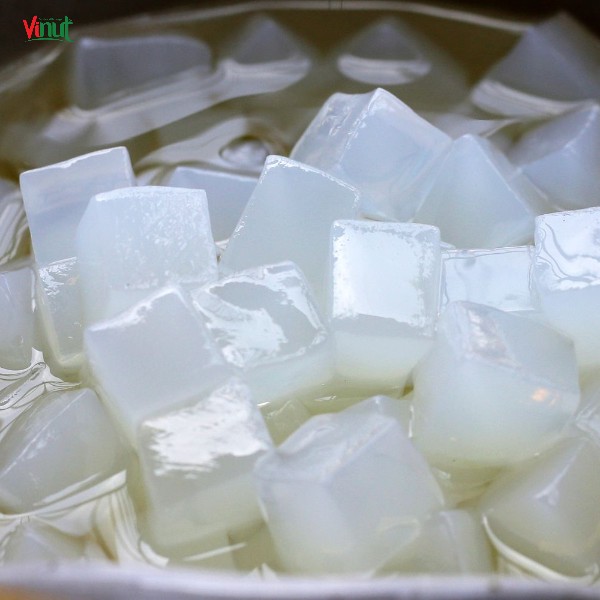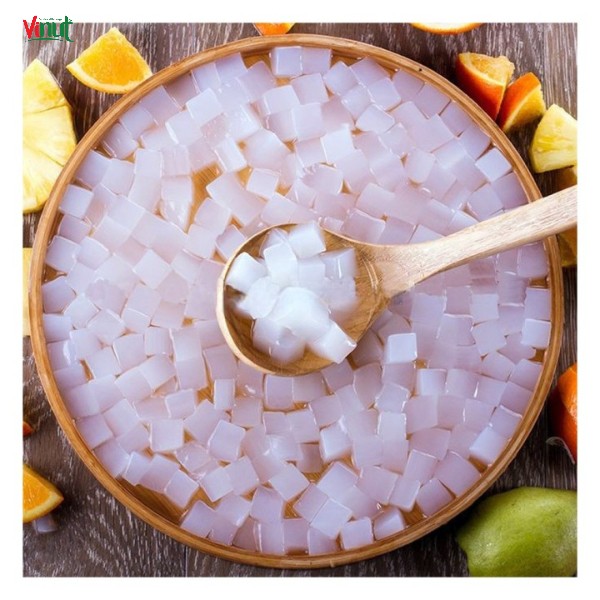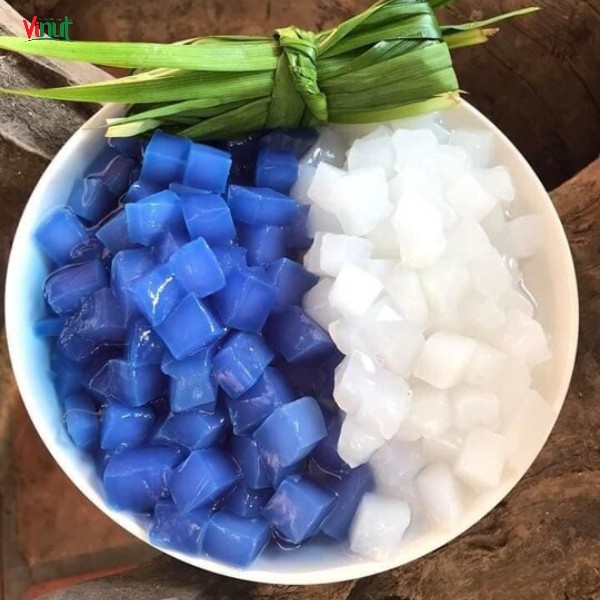
News
How Nata de Coco Jelly Juice Drink is Made

Nata de Coco is a popular ingredient in many refreshing beverages, known for its unique texture and health benefits. This delightful jelly-like substance, derived from coconut water, is widely enjoyed in various juice drinks across Asia and beyond. In this article, Cojo Cojo will explore the detailed process of making Nata de Coco Jelly Juice Drink, from its origins to its preparation and incorporation into delicious beverages.

Introduction
Nata de Coco Jelly Juice Drink is a refreshing and unique beverage that combines the chewy texture of Nata de Coco with the refreshing flavors of fruit juices. Originating from the Philippines, this jelly-like substance is made from fermented coconut water and has gained popularity worldwide for its delightful taste and health benefits. This article delves into the intricate process of making Nata de Coco and how it is used to create delicious jelly juice drinks.
Origins of Nata de Coco
Nata de Coco, which translates to “cream of coconut,” was first developed in the Philippines. It is a product of fermenting coconut water with the help of Acetobacter xylinum, a specific type of bacteria that converts the coconut water into a gelatinous substance. This traditional delicacy has been enjoyed for decades and is now a staple in many Asian desserts and beverages.
Nutritional Benefits of Nata de Coco
Nata de Coco is not only a tasty treat but also comes with several nutritional benefits. It is low in calories and fat, making it a healthy addition to various diets. It is also high in dietary fiber, which aids digestion and helps maintain a healthy gut. Additionally, Nata de Coco is rich in water content, which contributes to hydration, and contains essential minerals such as calcium and potassium.
Ingredients Required for Nata de Coco Jelly
To make Nata de Coco, you will need the following ingredients:
- Fresh coconut water
- Sugar
- Acetic acid (vinegar)
- Nata de Coco bacterial culture (Acetobacter xylinum)
These ingredients are essential for the fermentation process that transforms coconut water into the jelly-like Nata de Coco.

The Fermentation Process
Preparing the Coconut Water
The first step in making Nata de Coco is to prepare the coconut water. Fresh coconut water is extracted from mature coconuts and filtered to remove any impurities. This ensures that the fermentation process occurs smoothly without any contamination.
Adding the Bacterial Culture
Once the coconut water is prepared, sugar and acetic acid are added to create an environment conducive to fermentation. The Nata de Coco bacterial culture (Acetobacter xylinum) is then introduced to the mixture. This bacterium plays a crucial role in converting the coconut water into Nata de Coco.
Fermentation Period
The mixture is left to ferment for about 14 to 21 days at a controlled temperature. During this period, the bacteria metabolize the sugar, producing cellulose, which forms a jelly-like layer on the surface of the liquid. This layer is the Nata de Coco.

Harvesting and Processing Nata de Coco
Cutting and Washing
After the fermentation period, the Nata de Coco is carefully harvested by scooping the gelatinous layer from the top of the mixture. It is then cut into small cubes or desired shapes and thoroughly washed to remove any residual acetic acid and impurities.
Cooking and Sweetening
The washed Nata de Coco is cooked in water to further purify it. It is often sweetened by cooking it with sugar syrup, which enhances its flavor and makes it ready for consumption. The cooking process also ensures that the Nata de Coco achieves the desired texture – firm yet chewy Coco Jelly
Preparing Nata de Coco Jelly Juice Drink
Selecting the Fruit Base
To make a Nata de Coco Jelly Juice Drink, the first step is to select the fruit base. Popular choices include tropical fruits such as mango, pineapple, and lychee. Fresh or canned fruit juices can be used depending on availability and preference.
Combining with Nata de Coco
Once the fruit base is ready, the prepared Nata de Coco cubes are added to the juice. The amount of Nata de Coco can vary depending on personal preference, but typically, a generous amount is added to ensure a delightful chewy texture in every sip Coco Jelly

Flavor Enhancements
To enhance the flavor of the juice drink, additional ingredients such as honey, mint, or lemon can be added. These not only boost the taste but also complement the natural flavors of the fruit and Nata de Coco.
Popular Nata de Coco Jelly Juice Variations
Tropical Fruit Mix
A tropical fruit mix combines the flavors of pineapple, mango, and passion fruit with Nata de Coco. This refreshing drink is perfect for hot summer days and provides a burst of tropical goodness in every sip Coco Jelly
Lychee and Nata de Coco
Lychee and Nata de Coco make a delightful combination, with the sweet and floral notes of lychee blending seamlessly with the chewy texture of Nata de Coco. This variation is often enjoyed chilled and is a popular choice in many Asian countries.
Mango Delight
Mango juice mixed with Nata de Coco creates a rich and creamy beverage that is both satisfying and refreshing. The sweetness of the mango pairs perfectly with the subtle flavor and texture of Nata de Coco, making it a favorite among mango lovers Coco Jelly.
Storage and Shelf Life
Nata de Coco Jelly Juice Drink can be stored in the refrigerator for up to a week. It is best consumed fresh to enjoy the optimal texture and flavor. When storing, ensure that the juice is kept in an airtight container to prevent contamination and maintain its freshness.

Conclusion
Nata de Coco Jelly Juice Drink is a refreshing and nutritious beverage that combines the unique texture of Nata de Coco with the vibrant flavors of fruit juices. From its origins in the Philippines to its widespread popularity, this delightful drink offers a perfect balance of taste and health benefits. Whether you prefer tropical fruit mixes or classic combinations like lychee and Nata de Coco, this jelly juice drink is sure to satisfy your taste buds and keep you hydrated.
FAQs
1. What is Nata de Coco made from?
- Nata de Coco is made from fermented coconut water using the bacterium Acetobacter xylinum.
2. How long does it take to make Nata de Coco?
- The fermentation process for Nata de Coco typically takes about 14 to 21 days.
3. Can I make Nata de Coco at home?
- Yes, Nata de Coco can be made at home with the right ingredients and proper fermentation setup.
4. What are the health benefits of Nata de Coco?
- Nata de Coco is low in calories, high in dietary fiber, and contains essential minerals like calcium and potassium.
5. How should Nata de Coco Jelly Juice Drink be stored?
- It should be stored in the refrigerator in an airtight container and is best consumed within a week.
